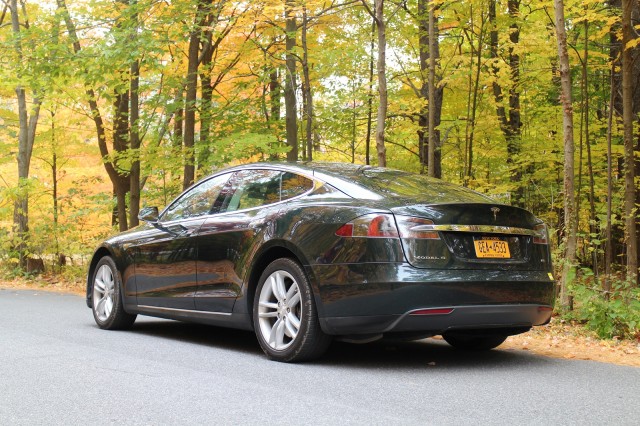![2013 Tesla Model S, in July 2017 [photo: David Noland] 2013 Tesla Model S, in July 2017 [photo: David Noland]](https://www.automobilebrand.com/wp-content/uploads/2017/07/2013-tesla-model-s-in-july-2017-photo-david-noland_100613425_m.jpg)
2013 Tesla Model S, in July 2017 [photo: David Noland]
Enlarge Photo
A couple of years ago, as my 2013 Tesla Model S approached the end of its 50,000-mile warranty, I debated long and hard whether to opt for Tesla’s extended warranty, which they call an Extended Service Agreement (ESA).
At $4,000, it wasn’t cheap. It provided four years and an additional 50,000 miles of coverage, up to a total of 100,000 miles. There was a $200 deductible for each service visit.
The problem was the length of the agreement: I wasn’t sure I’d be keeping the car for another four years.
DON’T MISS: Life with Tesla Model S: the challenges of selling her at last
Mercedes-Benz and BMW offered the option of shorter two-year and even one-year ESAs, but at the time, Tesla had only one option: 4 years/50,000 miles, take it or leave it.
The folks at my local Tesla service center assured me that if I sold or traded the car in less than four years, I would get a refund, pro-rated for the unused portion of the warranty.
So I signed on the dotted line for the ESA.

2013 Tesla Model S owned by David Noland, Catskill Mountains, NY, Oct 2015
Enlarge Photo
Halfway through the four-year ESA term, it looked to be a good decision. In the first two years, two door handles and the liftback latch were replaced, and an air-conditioning problem was repaired under the ESA.
There were no charges (other than the $200 deductibles) listed on the invoices, but I was pretty sure the repairs would have amounted to more than $2,000 without the ESA. So far, so good.
Trading up
Then came a series of unexpected events: Tesla announced the 100D version of the Model S; a real-estate investment I’d made paid off sooner and better than anticipated; and a detached retina reminded me that bad things happen and life is short.
READ THIS: Life with Tesla Model S: out with the old, in with the new
So I traded in my 2013 S-85 for a new 100D.
The old car had about 76,000 miles on it— just over halfway through the term of the ESA—so I expected my ESA refund to amount to just under $2,000.
I was shocked, to say the least, when the Tesla delivery rep called to report the actual amount of my refund: zero.

2013 Tesla Model S owned by David Noland, Catskill Mountains, NY, Oct 2015
Enlarge Photo
The catch
Buried deep in the ESA contract, it turns out, is a very big catch to Tesla’s pro-rated refund policy: any pro-rated refund is reduced by the amount already paid off by the warranty.
Here’s the actual contract language, on page 7, paragraph (c):
Your cancellation refund will be calculated on a pro-rata basis, and You will receive the lesser of the unused portion of the days or mileage that this Vehicle ESA has been in effect, compared to the term or mileage of the selected Service Type, and, if applicable, less the amount of any claims paid under the Vehicle ESA. (bold type added for emphasis)
CHECK OUT: Tesla Model S battery life: what the data show so far
The value of my ESA repairs, I was told, had amounted to some $4,600. That amount was therefore deducted from my $2,000 pro-rated refund
I guess I should feel lucky they didn’t make me pay back the extra $2,600.
My bad
Yes, I understand I signed the contract with this language in it.
No, I didn’t read the entire nine-page contract in detail. Instead, I relied on what the Tesla service folks had told me. As best as I recall, they said nothing about the refund being reduced by the amount of claims paid.

